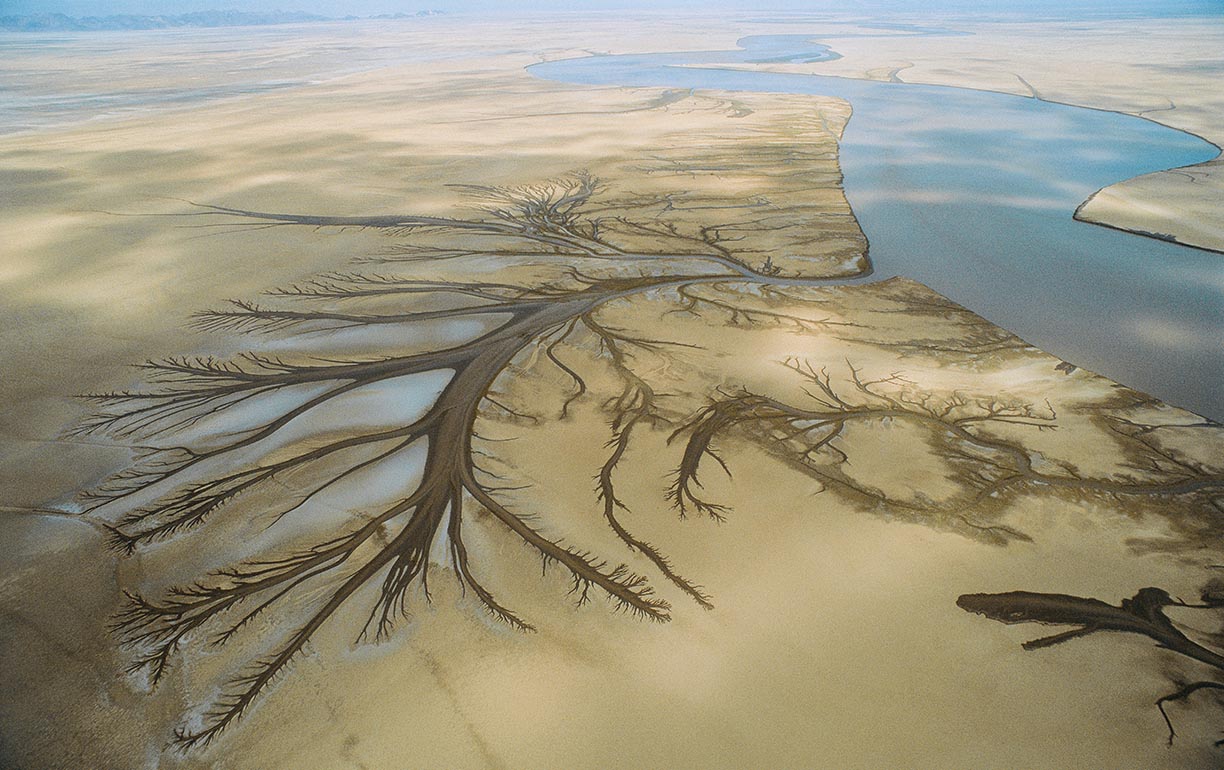
From above.
The impressive thing about George Steinmetz’ photographic work is its unique perspective – from above. As a speaker at 2015’s Climate Care Conference by Lufthansa Cargo he was showing a bird’s-eye view of a fragile planet.
The estuary of the Colorado River in Mexico looks like the branches of an old withered tree. A desolate, barren world of silt that chokes off virtually all forms of life. That wasn’t always the case, as photographer George Steinmetz, who has captured this hostile part of the world on camera, well knows. At one time, the estuary was distinguished by its abundant flora and fauna. Now, however, the Colorado, one of the largest rivers in North America, feeds so many dams in the USA that very little water reaches the estuary.
In his photographs, Steinmetz records something unique. This is mainly due to the perspective from which he sees the world as he works: from above. “Right at the start of my career I had a desire to show the world from a bird’s-eye view. However, the options offered by planes were very limited – I had to find an alternative,” recalls the American.
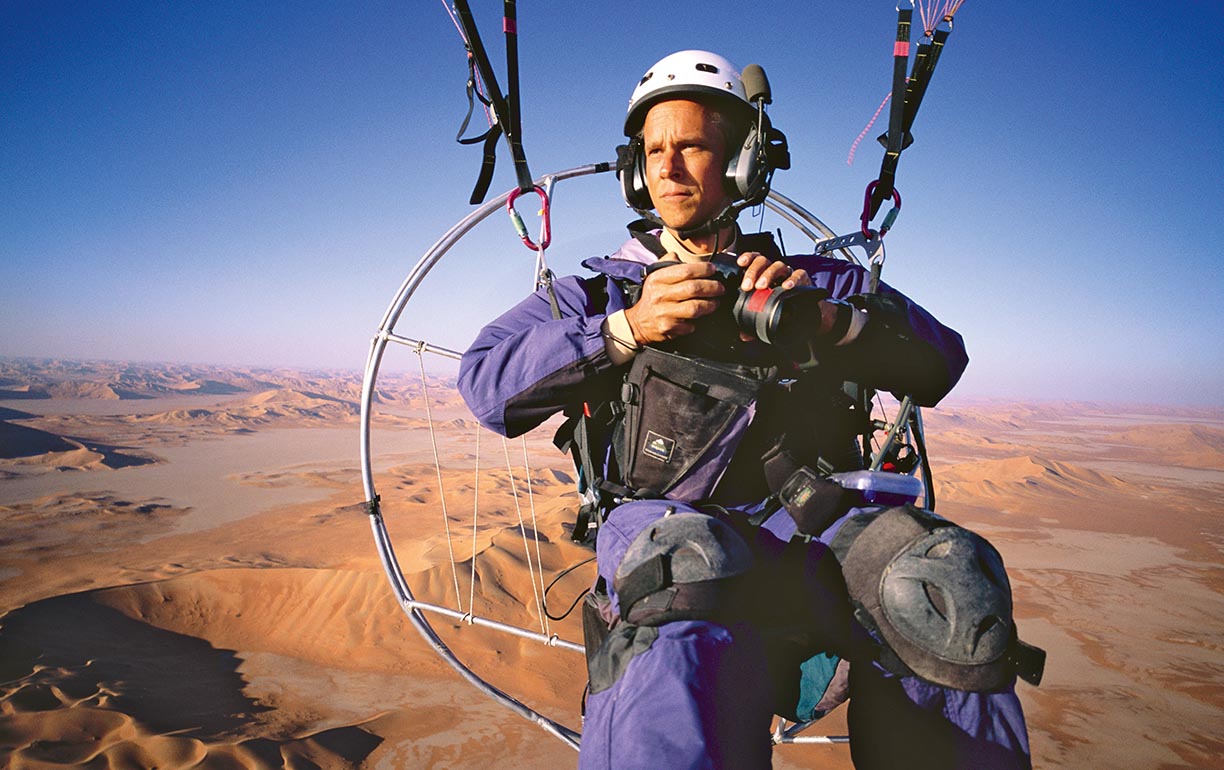
Ultimately, motorized paragliding was his flying method of choice. “I gained access to places that had never been photographed from above before. Impassable regions such as mined areas in the north of Chad, for example. Parts of the earth untouched for many years opened up to me – a unique feeling.”
Every flight has a surprise in store.
No matter how well the flight path is researched beforehand, it is that moment of surprise that gives Steinmetz’ photography its great appeal: what does the region actually look like from above?
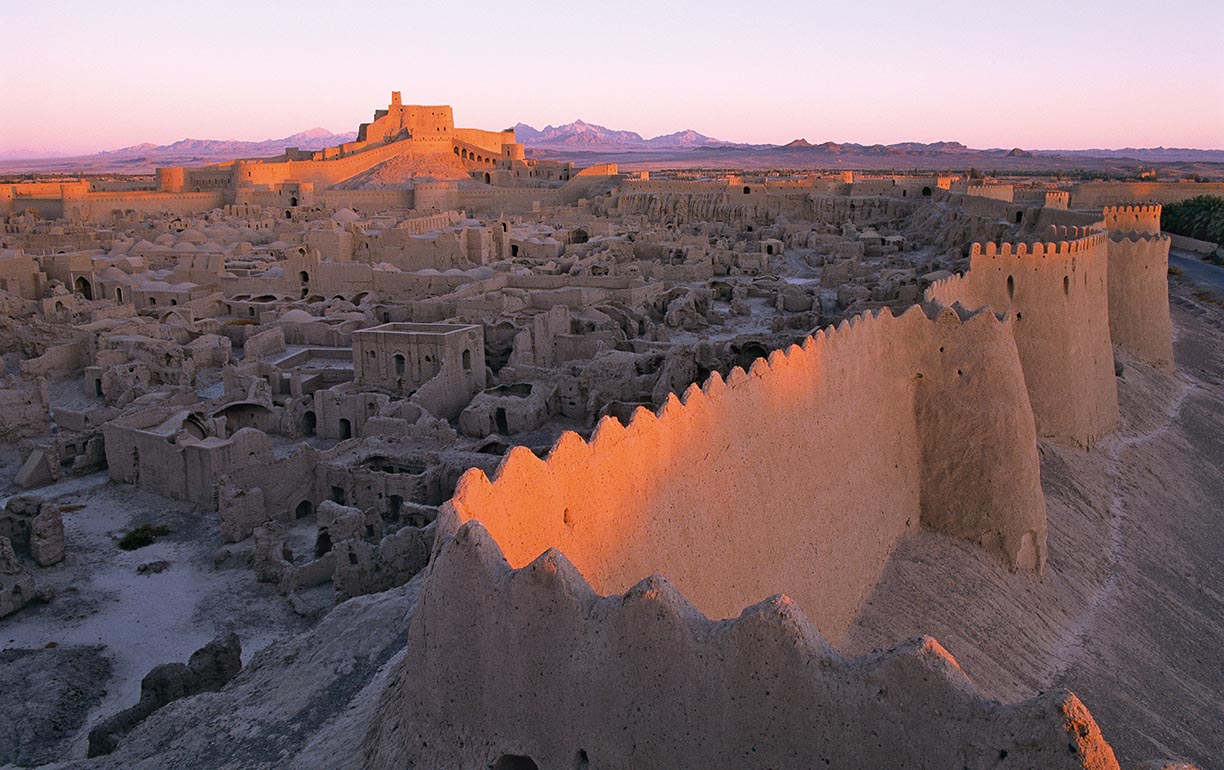
Signs of ancient growing areas, forgotten cemeteries or herds of animals passing by: “Sometimes, it only becomes clear to me much later how unique the scenery was that I was allowed to witness,” says Steinmetz. In Iran, for example: two weeks after Steinmetz photographed the historic city of Bam it was destroyed by a devastating earthquake that cost the lives of around 20,000 people.In assessing his subjects Steinmetz benefits from his study of geophysics: “I see the world not only through the eyes of an artist but also a scientist, even if I don’t regularly return to destinations I’ve already photographed,” explains Steinmetz.
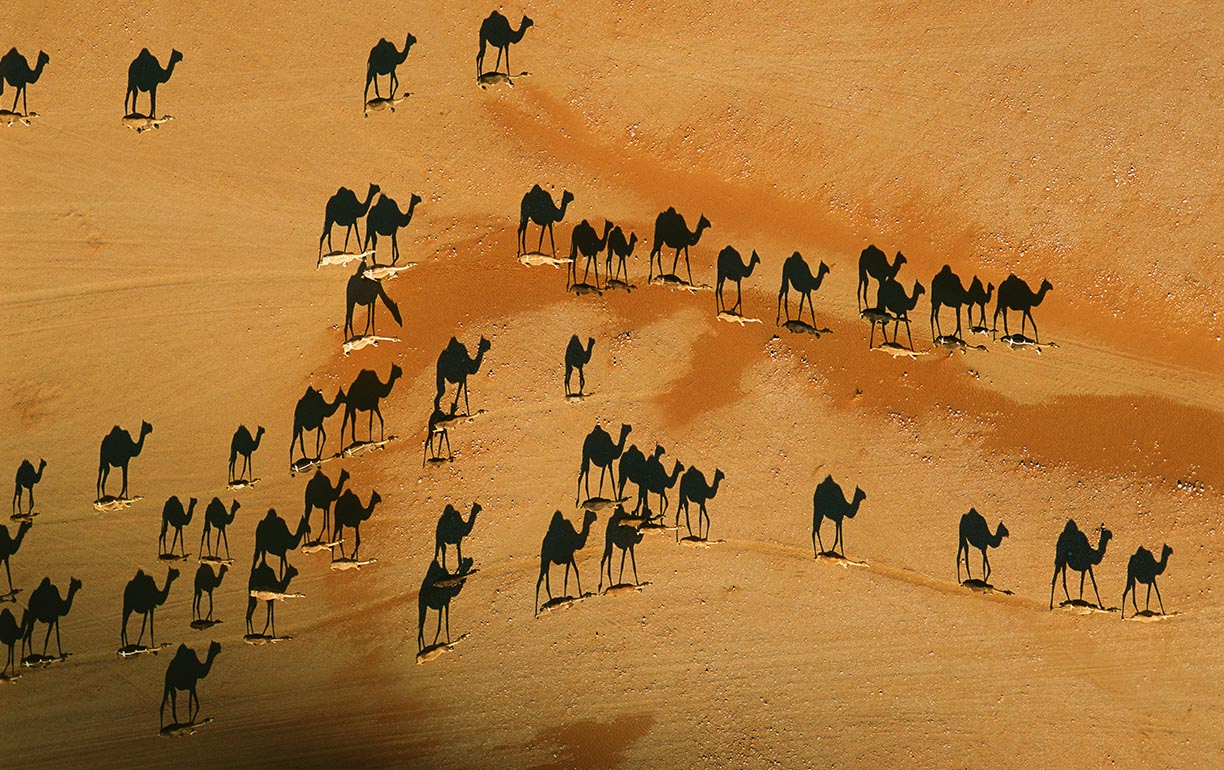
What are the forces acting on the area being photographed: are they purely natural spectacles or is it – as with the Colorado – man who shapes the landscape? His observations as well as his conversations with locals sharpen Steinmetz’ perspective: “On my photographic journeys, the effect of man on nature, whether indirect or direct, has become apparent: rising population numbers and the accompanying need for resources are taking their toll and I’ve thus been able to see for myself how the use of weapons, underground and opencast mining as well as construction projects and tourism are impacting on what were previously the largest and most unspoilt parts of our world.”
Paraglider brings the breakthrough as the best photographic vantage point.
During our conversation it becomes clear: Steinmetz is a driven man. In the course of his career, passion and a will that has always made him believe in his goals have never waned. It all began with a trip to Africa in 1979: at 21, Steinmetz hitch-hiked through the Sahara.
“I felt as small as an insect and wondered what the landscape must look like from above.”
That was the moment Steinmetz fell in love with Africa – and resolved, despite his scientific studies, to earn his living as a photographer. “I had talent, at least my parents thought so,” reminisces the 57 year-old, laughing, “but I just lacked the technique.” His courageous attempt nevertheless to sell his first pictures to “National Geographic” was rejected by its Photography Director with the words: “We publish photographs, not excuses.”
A setback – but not a reason to give up.
With his iron will and huge desire to continue working he learned the technique of taking photographs and, finally, how to paraglide: a recipe for success, as it was to prove. Since then, technical knowledge and experience, a scientific vision, but above all passion have all been evident in Steinmetz’ pictures: every subject speaks of the desire to discover something new; not to rely on traditional perspectives but to want more.
Paraglider brings the breakthrough as the best photographic vantage point.
|
During our conversation it becomes clear: Steinmetz is a driven man. In the course of his career, passion and a will that has always made him believe in his goals have never waned. It all began with a trip to Africa in 1979: at 21, Steinmetz hitch-hiked through the Sahara. “I felt as small as an insect and wondered what the landscape must look like from above.” That was the moment Steinmetz fell in love with Africa – and resolved, despite his scientific studies, to earn his living as a photographer. “I had talent, at least my parents thought so,” reminisces the 57 year-old, laughing, “but I just lacked the technique.” His courageous attempt nevertheless to sell his first pictures to “National Geographic” was rejected by its Photography Director with the words: “We publish photographs, not excuses.” |
A setback – but not a reason to give up. With his iron will and huge desire to continue working he learned the technique of taking photographs and, finally, how to paraglide: a recipe for success, as it was to prove. Since then, technical knowledge and experience, a scientific vision, but above all passion have all been evident in Steinmetz’ pictures: every subject speaks of the desire to discover something new; not to rely on traditional perspectives but to want more. |
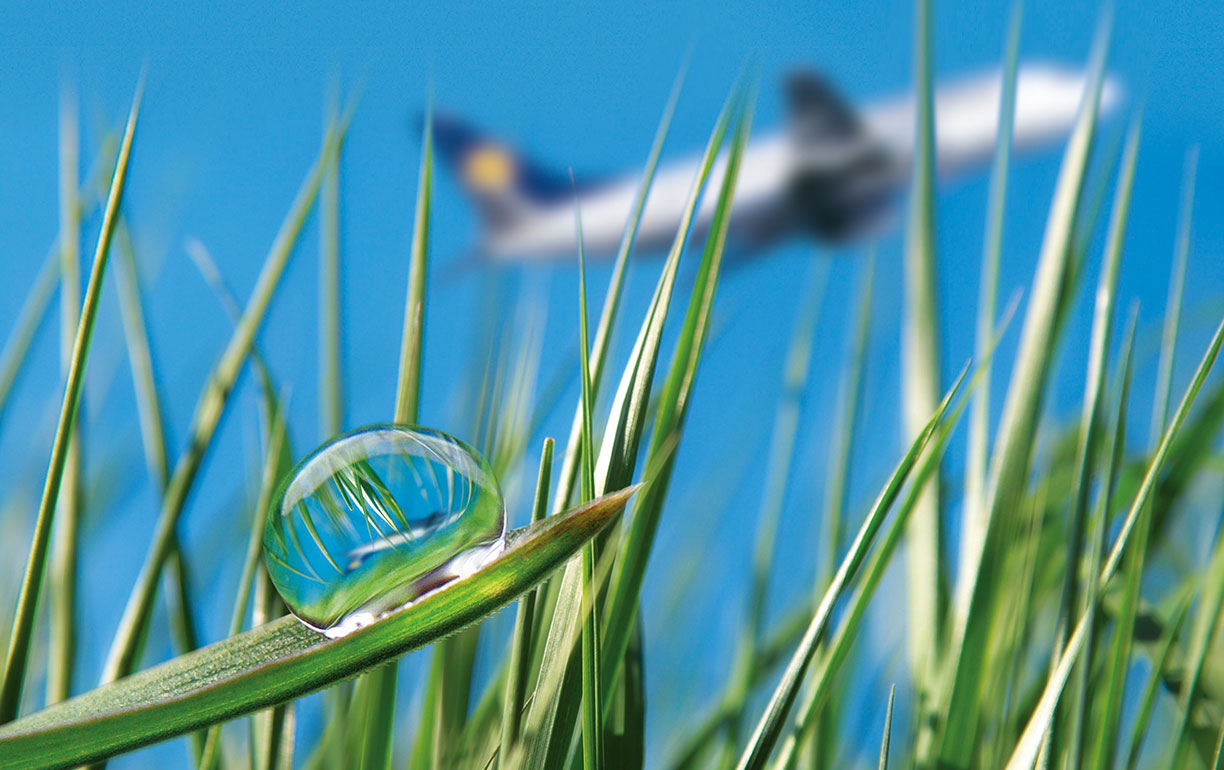
Want to learn more about George Steinmetz or talk to him about his photographs?
2015 he will be lending his support as a speaker to the fourth Cargo Climate Care Conference. Once again this year the Conference will be devoted to issues surrounding trends in air cargo, set against the backdrop of climate change. Together with customers and journalists, Lufthansa Cargo intends to analyze and discuss current environmental aspects in air cargo and logistics.
How do things stand today? What possible scenarios is research identifying for the future? And what visions and concepts for protecting the environment already exist for the period beyond that?
Part of the event also involves conferring the Climate Care Award on the most innovative idea for reducing the carbon footprint in air cargo.Right now, Lufthansa is pursuing innovative paths with a view to fulfiling this responsibility. Besides an ultra-modern fleet including the efficient Boeing 777F, kerosene-saving flight maneuvers such as continuous descent approach (CDA) or flight routes designed to optimize fuel consumption, technical elements such as the use of lightweight containers are ensuring lower kerosene consumption.
Dates:
As the partner for Steinmetz’ works of art, Lufthansa Cargo will be flying to his exhibitions in Europe: initial dates are already fixed. Others will follow:
-
Staatliches Museum für Naturkunde in Stuttgart: 15 April to 27 September 2015
-
KunstForum Gotha: 16 October 2015 to 10 January 2016
-
Naturkundemuseum im Marstall in Paderborn: 8 April to 3 July 2016
Photos:
George Steinmetz, Lufthansa Cargo
